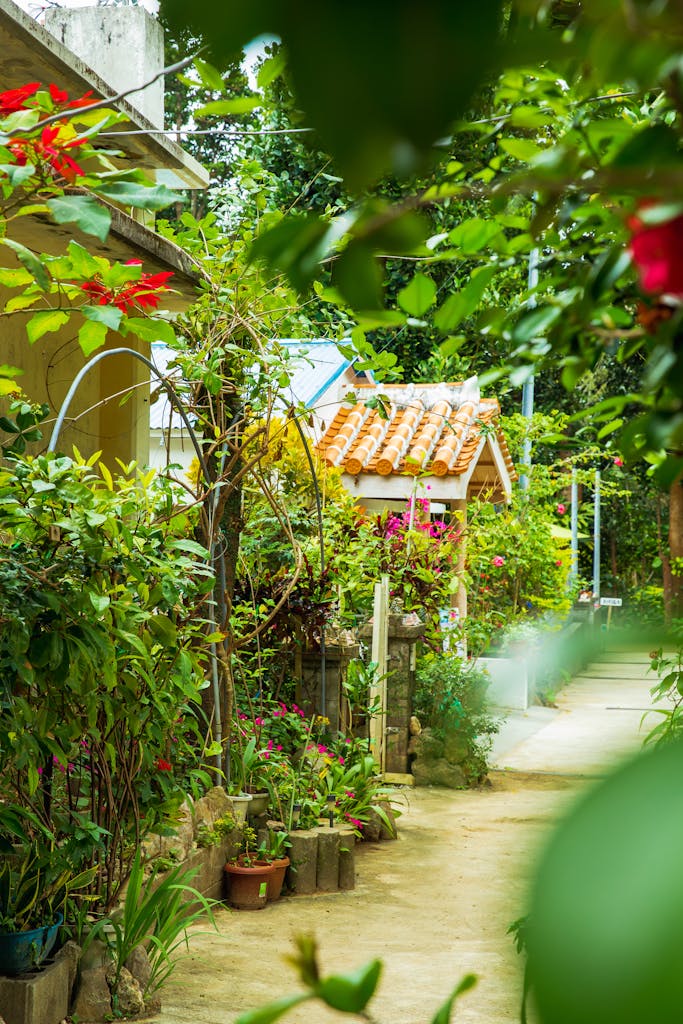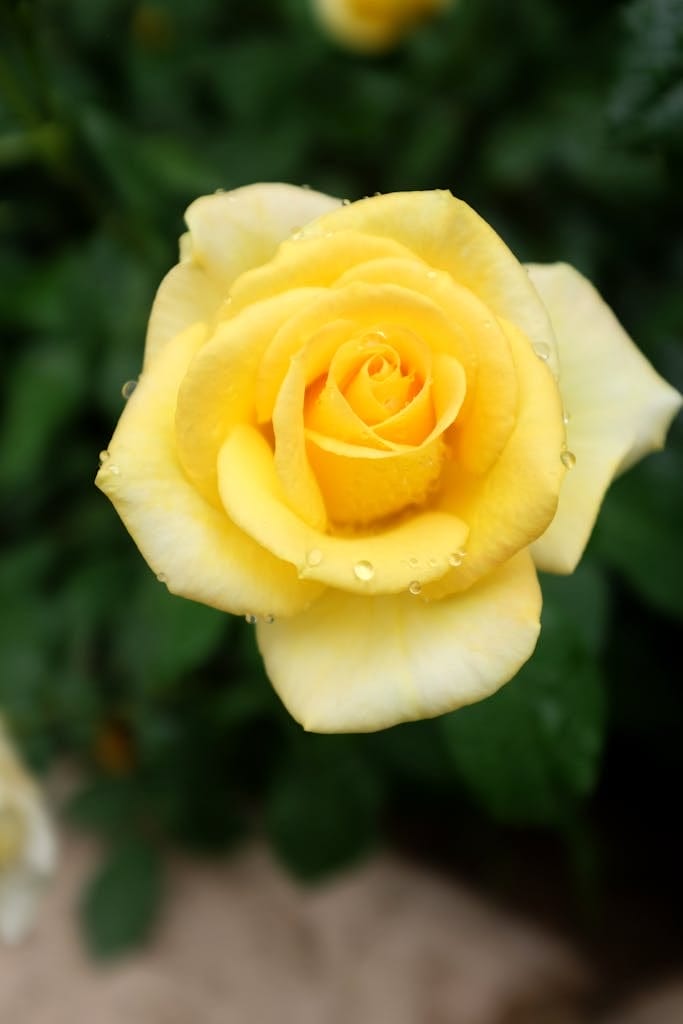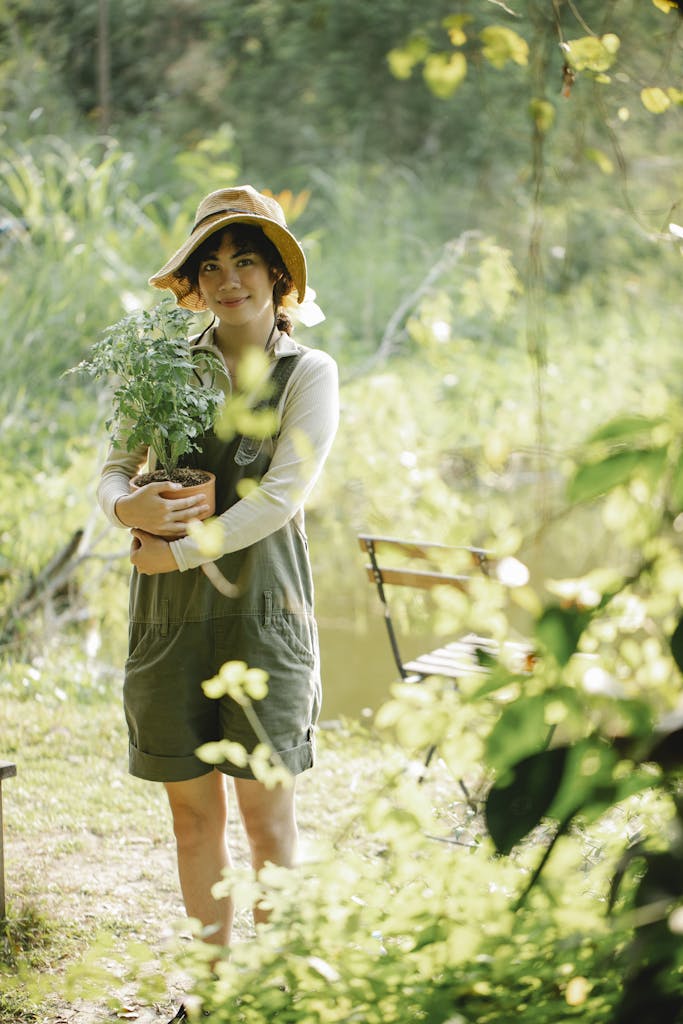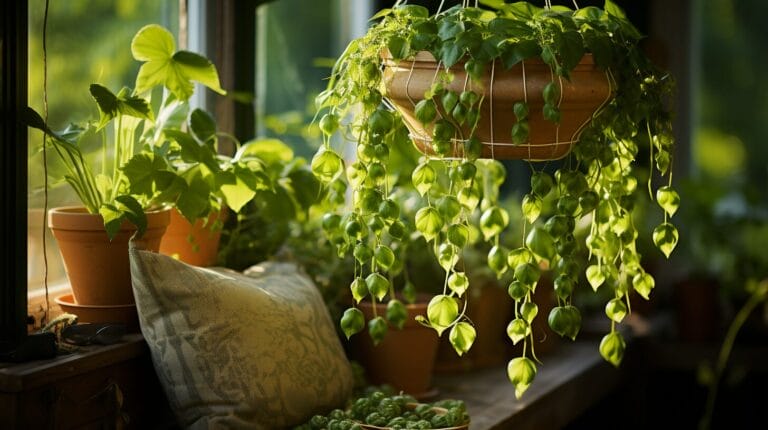In 2024, Potager Gardens, first developed in France, have seen a growth in interest with a surge of 40% in the last year. Notably, they blend aesthetics and utility by incorporating edible plants, herbs, blossoms, and fruit trees. So, what exactly is a potager garden?
Potager Gardens prioritizes organic gardening, avoiding chemicals, and emphasizing vibrant colors, creating a captivating focal point.
They adopt a holistic approach with techniques like crop rotation, offering both aesthetics and productivity. Inspired by traditional French designs, Potager Gardens blends utility and beauty in a well-designed space tailored to specific growing zones.
Key Takeaways
- Potager Gardens blend aesthetics and productivity for a harmonious garden space.
- Design includes raised beds, focal points, and thoughtful planning for small areas.
- Plant selection combines edible and ornamental plants with companion planting for a thriving ecosystem.
- Maintenance focuses on organic practices, beneficial insects, year-round care, and pollinator habitats.
Designing Your Potager Garden: Blending Function and Beauty

In crafting a Potager Garden, the artistry lies in seamlessly blending function with beauty. Thoughtful potager garden design incorporating strategic seating areas, loire valley inspirations like the renowned Potager du Roi, and the incorporation of focal points like fruit trees, flowers, and herbs are key design elements.
A well-planned layout maximizes space utilization through raised beds, especially in compact urban areas, while offered superior soil control and easier access for harvesting a mix of vegetables.
Focal points such as fruit trees contribute not only to aesthetics but also yield delicious root vegetables and berry harvests perfect for kitchen garden staples. Herbs, aside from their ornamental value as a perfect spot enhancement, serve as flavorful additions to culinary creations.
Plant Selection for Potager Gardens: A Mix of Edibles and Ornamentals

The essence of a Potager Garden lies in the harmonious interplay between edible and ornamental plants. By blending vegetables, herbs, fruits, and flowers, a dynamic and multifunctional garden emerges, providing both sustenance and beauty.
Climbing plants introduce a vertical dimension to the garden, maximizing space and visual interest. These plants not only beautify but also offer practical benefits such as shade and additional growing areas. Strategic companion planting alongside vegetables enhances growth, repels pests, and attracts pollinators.
Harnessing the Power of Companion Planting in a Potager Garden

The synergy of companion planting in a Potager Garden nurtures symbiotic relationships among plant species, cultivating a flourishing ecosystem that enhances plant health and yield. By strategically situating plants to boost growth, repel pests, attract beneficial insects, and enrich soil fertility.
In a cottage garden-style Potager Garden, companion planting manifests in combinations like tomatoes with basil, marigolds with vegetables for pest deterrence, or corn intercropped with beans and squash for natural support. Not only do these combinations enhance visual appeal, but they also fortify the garden’s vitality and productivity.
– What Are the Benefits of Incorporating Cut Flowers in a Potager Garden Design?
Incorporating a raised cut flower garden layout in a potager garden design can bring numerous benefits. It adds visual interest, attracts pollinators, and provides fresh blooms for arrangements. The elevated design also helps improve drainage and makes it easier to maintain and harvest the flowers.
Maintaining Your Potager Garden: Tips for a Productive Edible Garden

For a thriving edible garden, organic gardening practices take center stage in a Potager Garden. Opting for natural solutions like compost and organic fertilizers not only ensures plant health but also nurtures a vibrant garden ecosystem. Embracing beneficial insects, such as ladybugs and lacewings, fosters natural pest control, safeguarding crops.
Year-round care, encompassing regular watering, proper pruning, and timely harvests, is fundamental to the garden’s productivity. Creating habitats to attract pollinators like bees and butterflies guarantees optimal pollination for bountiful yields.
Conclusion
As we conclude our exploration of Potager Gardens, we’re captivated by the seamless blend of beauty and functionality inherent in these French-inspired kitchen gardens. By intertwining edibles with ornamentals, practicing companion planting, and embracing sustainable gardening practices, we’ve unraveled the secret to cultivating a sanctuary that nourishes both body and soul.
Let’s continue to cultivate our outdoor spaces with reverence and purpose, forging a harmonious equilibrium between nature and ourselves.
Frequently Asked Questions
what is a potager garden?
Absolutely! With thoughtful planning and vertical space utilization, a thriving Potager Garden can flourish in a compact urban setting. Containers, trellises, and raised beds are excellent space-saving solutions, enabling a diverse array of fruits, veggies, herbs, and flowers.
How Can I Deter Pests in a Potager Garden?
Companion planting, physical barriers like row covers, and maintaining garden hygiene by eliminating decaying plant matter are effective pest deterrent strategies. Fostering a diverse garden ecosystem promotes natural pest control, ensuring plant vitality.
Incorporating Vertical Gardening Techniques
Utilize trellises, arbors, and hanging planters to maximize space and sunlight exposure in your Potager Garden. Growing climbing vegetables vertically optimizes airflow and minimizes soil-borne diseases, allowing for a varied plant selection.
Choosing Fruit Trees for a Potager Garden
Consider factors like size, growth habits, and pollination needs when selecting fruit trees. Opt for dwarf or semi-dwarf varieties for space efficiency and ensure proper pollination conditions for optimal fruit production.
Natural Fertilizers and Pest Control
Embrace compost, manure, and seaweed-based fertilizers for soil enrichment in your Potager Garden. For pest management, employ companion planting strategies and organic solutions like neem oil spray to maintain a thriving garden ecosystem sustainably.






